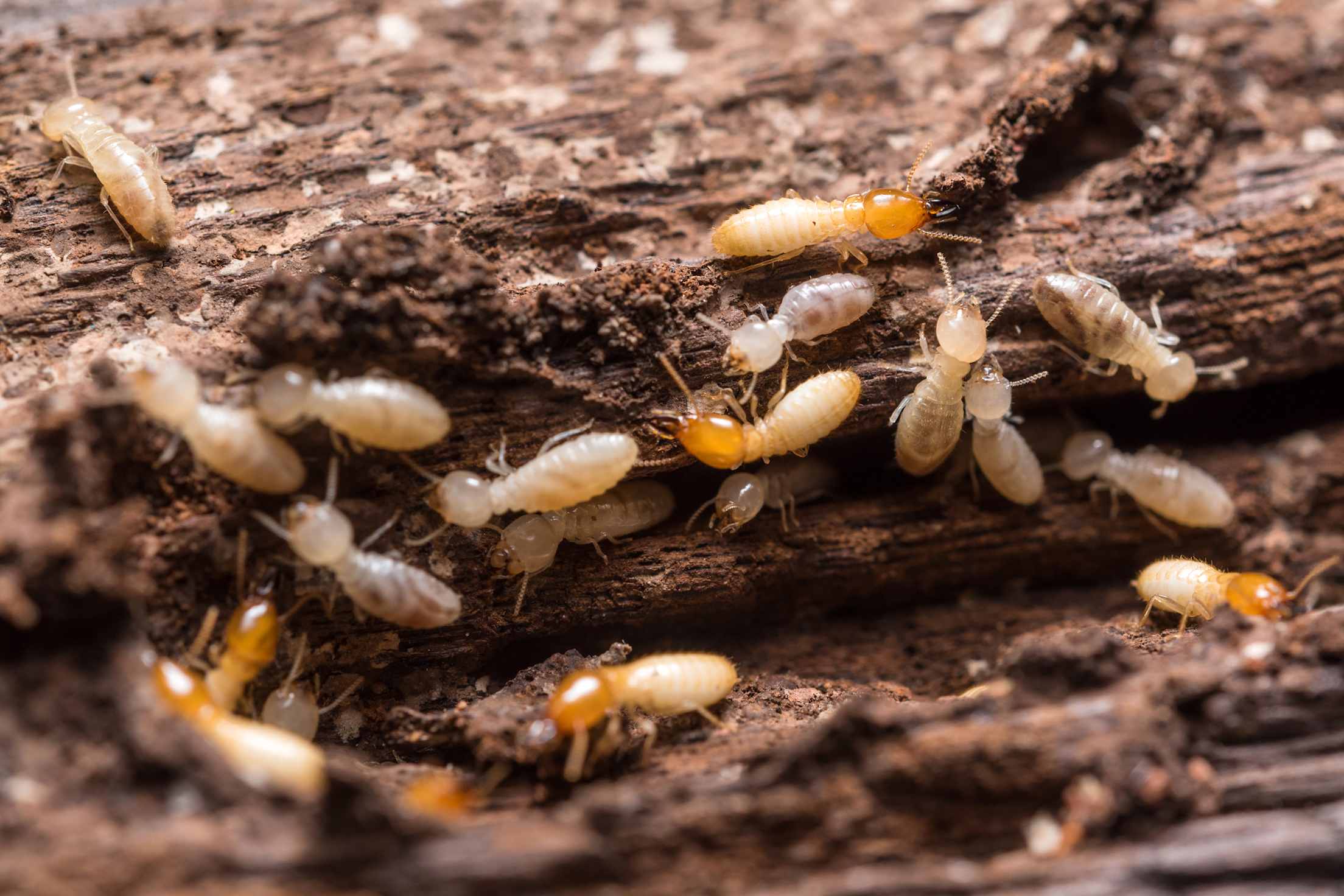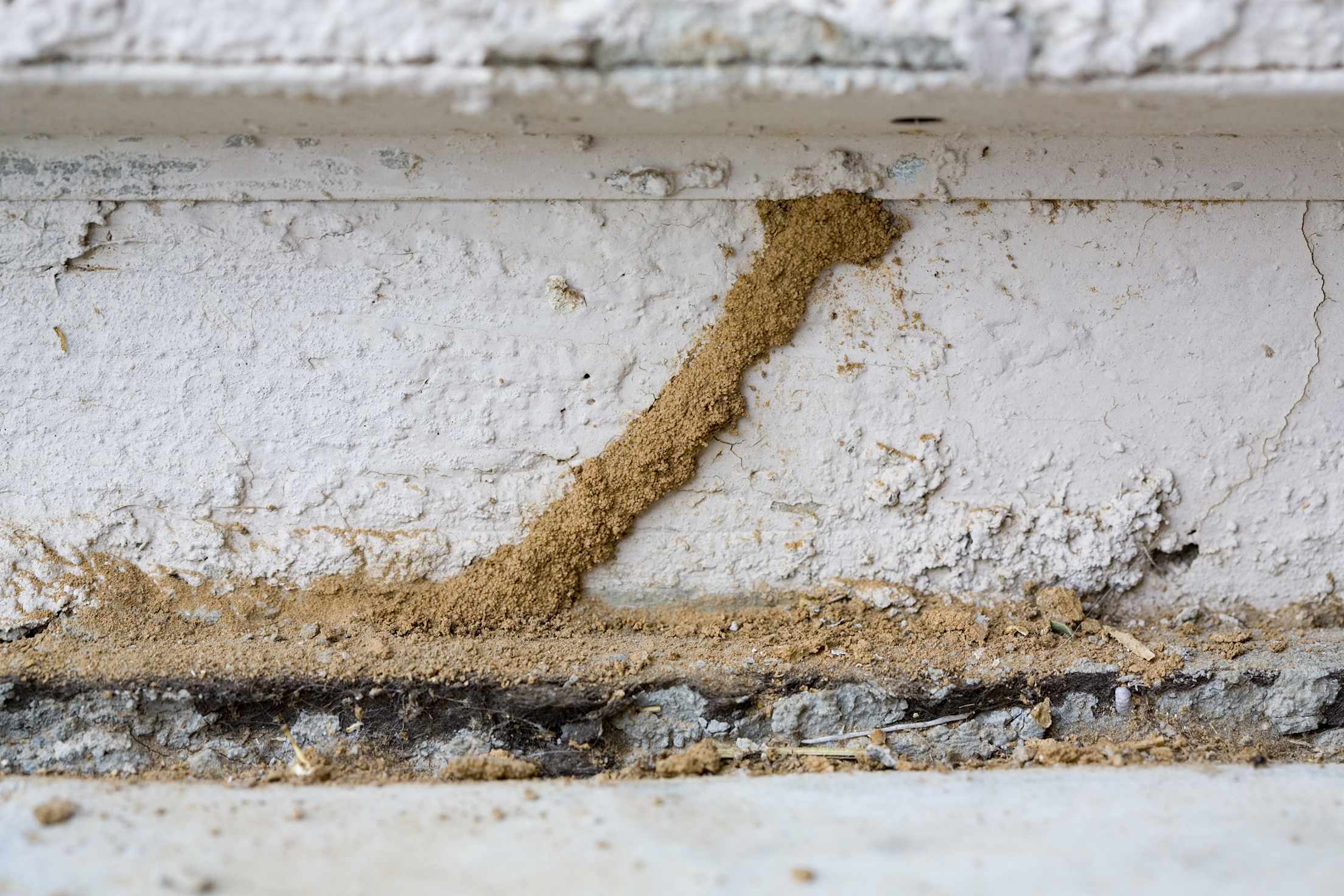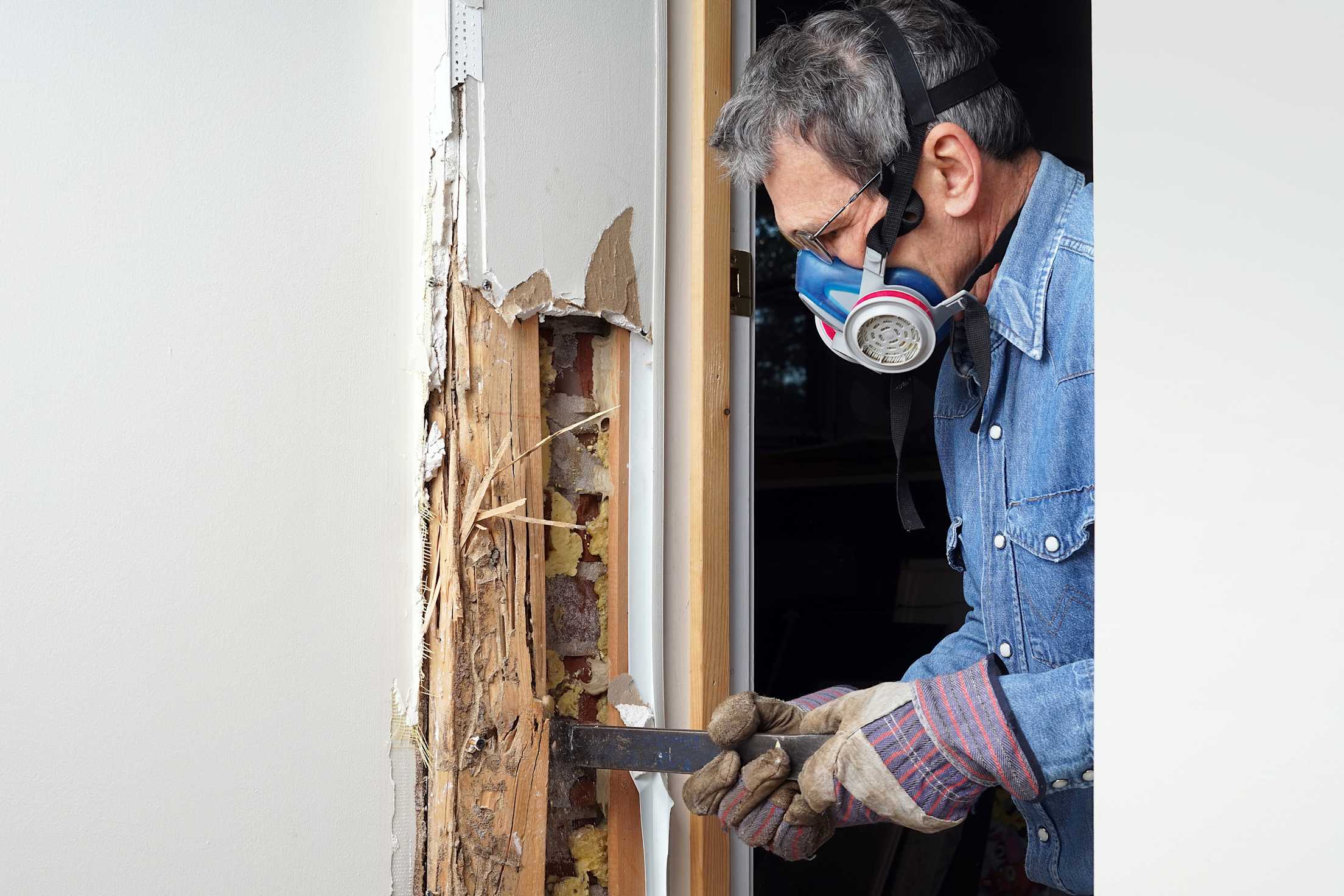
What Homeowners Need to Know About Termites
Learn how to prevent termites from entering your home and what to do if you find an infestation.

Termites may be petite, but don’t let their size fool you into dismissing their impact. Termites cause more than $5 billion in damage each year across the U.S., according to Jim Fredericks, chief entomologist for the National Pest Management Association.
“A termite infestation in the home can cause severe damage to the structure,” Fredericks says.
These ant-like creatures live in every state, aside from Alaska, and chew voraciously. They mainly consume wood, but they also eat any product made from cellulose, including insulation and books. Termites can tunnel through floors, walls, ceilings, foundations, wooden furniture, and more. And, unlike other household pests—such as mice, roaches, and ants—it’s not always obvious when termites set up residence.
Discover the best ways to prevent termites from entering your home—and how to spot and eliminate them if they do.

Termites can often be mistaken for ants.
How to Identify the Different Types of Termites
There are around 2,000 types of termites, an insect that has existed since dinosaurs roamed. In the West, the three types of termites you’re most likely to encounter are:
- Subterranean termites These are the most common type across the country, Fredericks says. They live in soil and use mud shelter tubes—tunnels made from mud and soil—to travel up to the wooden parts of a structure;
- Drywood termites They’re found in warmer, coastal regions in California, as well as other temperate states. “They do not require contact with soil in order to survive,” Fredericks says. “They make their colony within their food source, which is the wood itself;”
- Dampwood termites These are common in the West and Southwest, says Fredericks. They do not create mud shelter tubes, nor do they climb. They’re an issue when there is earth-to-wood contact and moisture—think: a pile of firewood on the ground or your garden bench.
Termites form colonies, which can contain thousands of termites, and cooperate to find food and care for their young. These colonies can live and grow for years.
There’s no off-season for termites—they’re always eating. “They work non-stop, doing damage,” Fredericks says. If you associate termites with springtime, that’s likely because colonies produce swarmers—winged adults—in warmer weather. These flying termites can be seen leaving the nest to reproduce and hunt for new homes.
How to Prevent Termites
For homeowners, preventing termites from getting in is key. Here are some easy strategies to make your home less enticing.
Store firewood away from your home. Keep all untreated wood at least 20 feet away, recommends Fredericks. That’s true for mulch, too, he says. Not only is it often made from wood chips (food for termites), but if it’s piled near the foundation or siding, the mulch can disguise termites’ entry points to your home.
Reduce moisture. Your goal should be to minimize moisture around your home, says Andrew Greess, owner and CEO of QSPRAY.com, a supplier of professional pest control equipment. Termites need water nearby to survive. Make sure that downspouts and the grading around your property divert rain and snow melt away from the foundation, and reduce unnecessary moisture inside too. “Promptly fix any other sources of excess moisture, such as leaky faucets,” Greess says.
Keep siding above the ground. “Your house’s siding should start six inches above the ground; only the concrete foundation should touch the soil,” Greess says.

Inspect your foundation for mud shelter tubes.
How to Know if You Have Termites
None of the above tactics are a magic bullet for keeping termites out. “There’s not a failsafe prevention,” Fredericks says. That means it’s important to be vigilant about checking for signs of an infestation. Here are some things to look for.
Mud Shelter Tubes
These tunnels are quite thin—about the diameter of a pencil. Look for these around the foundation of your home. “The important places to look are where the structure is in contact with the soil,” Fredericks says.
Swarms
A swarm of insects inside is a likely sign that you have a colony within, but a swarm outside doesn’t necessarily indicate a problem. If you see a swarm, first confirm that what you’re seeing is termites, not flying ants. The two insects resemble each other, but termites have straight antennae and a broad waist, where ants have angled antennae and a pinched waist. Both swarm in the spring or early summer when it’s warm.
Damage
You can sometimes see the signs that termites have been hard at work without removing drywall or siding. Wood may appear dark, blistered, or layered when damaged by termites, and mud or soil may be present. Your hearing can help you detect damage too: If you tap on wood and it sounds hollow, that could mean termites have eaten the hidden insides. This wood will be so damaged that digging in with a screwdriver will puncture it.
Wings and Feces
It’s possible you’ll spot wings from subterranean termites on your home’s entry points (doors and window sills), which indicate that termites that swarmed outside your home have now made their way inside. Another sign of an infestation: fecal pellets. “Drywood termite pellets are tiny, and might look like salt and pepper [or grains of sand] along the windowsill,” says Fredericks.
While you may be able to spot major signs and infestations on your own, a pest-control professional can ensure you don’t miss anything. “A professional is trained to look for these signs,” Fredericks says. “We recommend that on an annual basis, you have someone come to do an inspection of your home to determine if termites or their evidence is present.” You want to catch termites as early as possible to prevent expensive—and potentially dangerous—damage.

Termite damage may need to be repaired by a professional.
How to Get Rid of Termites
If you have termites, don’t ignore the situation. “Untreated termite damage can significantly undermine the structural integrity of your home,” Greess says. Unfortunately, termites are unlikely to go away on their own.
The best way to get rid of termites is to hire a professional pest control company. “Termite control is definitely not a do-it-yourself project,” says Fredericks. DIY treatments, such as using insecticides purchased at a home improvement store, are less effective, points out Greess. "Professionals know how to use chemicals safely to prevent harm to you and other inhabitants of your home,” Greess says. “Using DIY treatments can cause safety concerns if not used properly."
While termites are infuriating, take the time to investigate and select a reputable pest control company. The Environmental Protection Agency recommends looking for companies that are licensed, guarantee their work, and belong to professional associations, such as the National Pest Management Association or a state-level association.
The specific treatment a professional will recommend will depend on the type of termites you have and where the termites are located in the structure. “Subterranean termites may be treated with liquid termiticide, spraying termiticide-containing foam into walls, and installing termite bait stations in the ground,” says Greess. “Drywood termites, on the other hand, often require the home to be tented and fumigated.”
The good news is that a treatment can usually stop the damage and protect the house for the future, says Fredericks. “There is almost always a treatment solution available,” he says.